6.02.2018
SpaceX's Falcon Heavy Is Ready For Its Historic Flight
Elon Musk says it’s “guaranteed to be exciting, one way or another.”
CAPE CANAVERAL—Around midnight on Sunday, after the evening’s heavy rain dwindled to a drizzle and then finally stopped, a giant rocket emerged from a warehouse into the thick, humid air, ready for a historic journey.
Its first stop, not far from the warehouse, was launchpad 39A, the site of rocket launches that, decades earlier, had hurled American astronauts toward the moon. From there, the rocket will take off, propelled into the sky by the power of 27 roaring engines. It will climb higher and higher into the atmosphere until it’s time to perform a complicated sequence not unlike synchronized swimming. Two of its three cores will dislodge and coast back down to Earth. The third will follow, just as soon as it deposits its payload, a shiny red car, into space, where it will settle into an orbit around the sun that will take it as far as Mars.
Or, you know, the whole thing could all go up in flames.
Such is the uncertain reality of the maiden flight of the Falcon Heavy, the heavy-lift launch vehicle developed by Elon Musk’s SpaceX. There’s a chance the attempt may go terrifically well, or horribly wrong. The launch is currently scheduled for Tuesday from Kennedy Space Center. So far, the weather looks good for a launch, but SpaceX could still choose to delay the test flight by a day or more.
Musk himself has said the Heavy may blow up—and if it does, he hopes it makes it far enough away from the launchpad so that the explosion doesn’t severely damage a historic site that would no doubt be very expensive to fix. “Guaranteed to be exciting, one way or another,” Musk teased in December.
Musk first unveiled the Heavy in 2011 to reporters at the National Press Club in Washington, D.C. The rocket would essentially be a Falcon 9 on steroids: three cores, strapped together and modified to fire and operate in unison. Musk spoke in a small room with several empty seats, gesturing in front of a small replica of the Heavy on a table behind him. He said the rocket would have twice the lift capacity of the United Launch Alliance’s Delta IV Heavy, the most powerful rocket currently in operation, at one-third the cost. He said it would fly in 2013.
Seven years later, the setting is far more crowded. Hundreds, perhaps thousands, of people have descended on the Space Coast for the Heavy’s maiden flight. Many more will watch the action on the livestream from around the world. The replica on the table in a poorly lit conference room is now a nearly 230-foot-tall gleaming behemoth piercing the blue Florida sky, capable of producing 5 million pounds of thrust at liftoff. SpaceX hasn’t let anyone get close enough to the area to snap a picture of the rocket. Press will get their chance on Monday, so good photos are on their way.
The flight of the Falcon Heavy will be the biggest test of SpaceX’s engineering yet. No rocket this powerful has attempted to launch from U.S. soil since the Space Shuttle in 2011 and, before that, the Saturn V rocket that sent the Apollo astronauts to the moon.
“It actually ended up being way harder to do Falcon Heavy than we thought,” Musk said last year. “At first it sounds real easy. You just stick two first stages on as strap-on boosters. How hard can that be? But then everything changes.”
nasa is currently building a rocket of its own, the Space Launch System, capable of producing 8.8 million pounds at liftoff, enough to someday return humans to the moon. The SLS will surpass the Heavy in power—but not for some time. The space agency expects a maiden flight in late 2019, but a recent internal review found mid-2020 is more realistic. If the Falcon Heavy launch is successful, nasamay find itself, in the year of its 60th birthday, standing by as someone else—a commercial company—does the heavy lifting from the ground it once dominated, at least for a few years.
The Heavy launch is “a step toward history, toward restoring the capability to launch very heavy payloads at an affordable price,” says John Logsdon, a spaceflight historian who watched Apollo 11 take off from the same site in 1969.
Back then, and for many years later—perhaps not until the Falcon 9 started flying regularly and successfully in the last few years—“the idea of private development of something like this would have been basically incredulous,” Logsdon says.
A reliable and operational Falcon Heavy is an attractive option for customers looking to launch bigger payloads than the Falcon 9, the company’s trusty fleet of smaller rockets, can handle—heavy satellites, massive telescopes, maybe even people. Musk also promises it would be a cheaper option. The price tag for a Falcon Heavy launch would be about $90 million, compared to reportedly more than $400 million for a Delta IV Heavy flight. The SLS, meanwhile, is estimatedto cost $1 billion per launch—quite the sum for an expendable rocket you can only use once. If delays to the SLS continue, nasa could very well find itself in the position of paying SpaceX for flights on the Heavy while engineers slog through the construction of the SLS. If not SpaceX, then perhaps ULA, which is developing a heavy-lift launch vehicle called Vulcan, or Blue Origin, which is working on an orbital rocket named New Glenn. All are designed for some level of reusability to reduce the cost of launch.
“If SpaceX can become operational with Falcon Heavy and ULA can become operational with Vulcan and Blue Origin can become operational with New Glenn, any one of them—then that sends a strong message to Congress,” says Laura Forczyk, a space analyst and founder of Astralytical, a consulting firm. “Does this rocket, the SLS, need to actually happen?”
If the Heavy makes a successful first flight, SpaceX will continue to ride the streak it set in 2017. After a brief hibernation following an explosion in September 2016 that destroyed a Falcon 9 and its $200 million commercial payload, SpaceXreturned to the launchpad last January with a successful launch. After that, the company maintained a steady launch cadence from a pretty diverse group of customers, transporting commercial satellites, International Space Station cargo, and even classified missions for the U.S. government. The company’s total for the year, 18, accounted for most of the orbital launches in the United States in 2017.
A successful flight might prompt Musk to say more about his plan to use the Heavy to send two private citizens on a trip around the moon. We haven’t heard much on that front since his initial announcement last February. He may also proceed full steam ahead on design of the even-larger BFR, the rocket formerly known as the Interplanetary Transport System, which Musk envisions will revolutionize international travel, launch satellites and spacecraft, and carry astronauts to low-Earth orbit and beyond.
And if the Heavy fails? Well, SpaceX will probably still hold onto that streak. After all, Musk has spent months warning the public the launch might fail. He chose as its payload a cherry-red Tesla roadster, a crafty cross-promotion that is intended to draw attention to the launch with its flashiness but also defuse the spectacle of potential failure with its silliness. And it’s not like the destruction of the Heavy will really set SpaceX operations back. Two of the Falcon 9 cores on the Heavy have already flown once before, and the company has never flown the same booster more than twice. If any of them blow up, the company will have plenty more where that came from. A failure of a Falcon 9 rocket would be another story, and would likely cost SpaceX the trust of some customers and force the company into another quiet hiatus for investigations.
Whatever happens, Musk has promised the public a good show, and it’s about to start.
Quelle: The Atlantic
+++

FALCON HEAVY TEST FLIGHT
The first test flight of Falcon Heavy is targeted for Tuesday, Feb. 6th at 1:30 PM ET from Launch Complex 39A at Kennedy Space Center in Florida. When Falcon Heavy lifts off, it will be the most powerful operational rocket in the world by a factor of two.
With the ability to lift into orbit nearly 64 metric tons (141,000 lb)---a mass greater than a 737 jetliner loaded with passengers, crew, luggage and fuel--Falcon Heavy can lift more than twice the payload of the next closest operational vehicle, the Delta IV Heavy, at one-third the cost.
Falcon Heavy draws upon the proven heritage and reliability of Falcon 9. Its first stage is composed of three Falcon 9 nine-engine cores whose 27 Merlin engines together generate more than 5 million pounds of thrust at liftoff, equal to approximately eighteen 747 aircraft. Only the Saturn V moon rocket, last flown in 1973, delivered more payload to orbit. Falcon Heavy was designed from the outset to carry humans into space and restores the possibility of flying missions with crew to the Moon or Mars.
Quelle: SpaceX
+++
Update: 19.15 MEZ
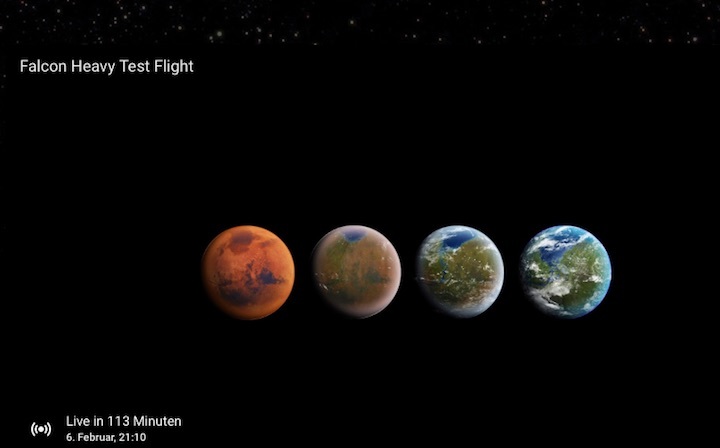
+++
Update: 21.24 MEZ
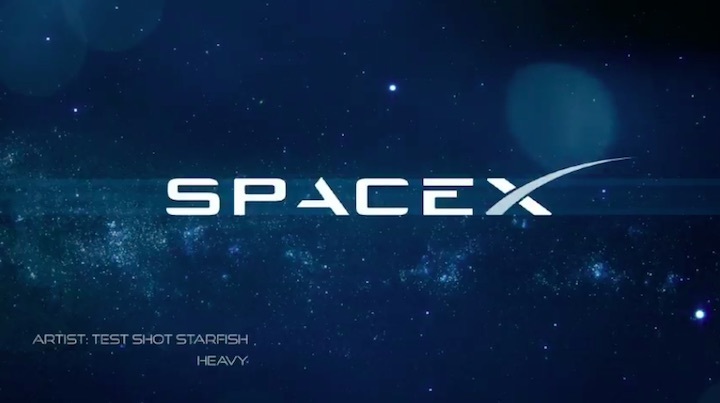
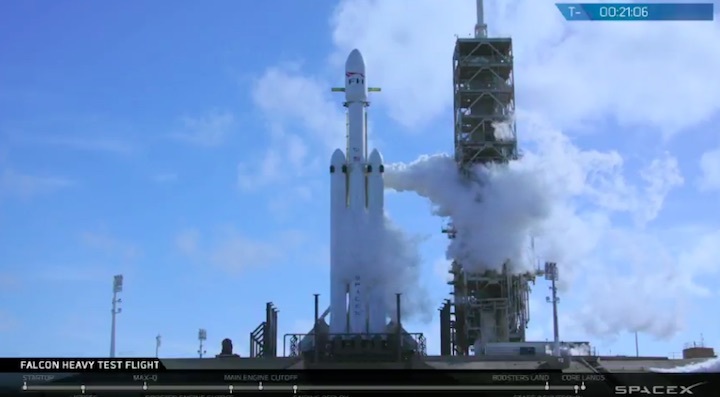
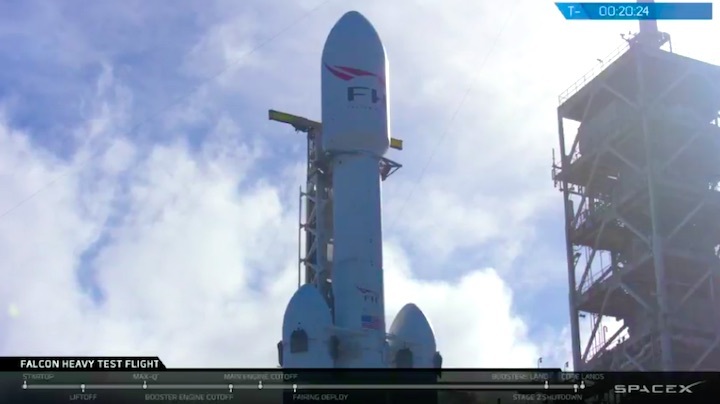
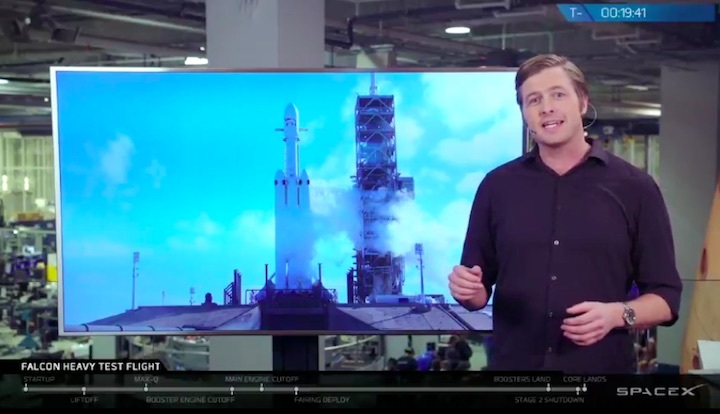
+++
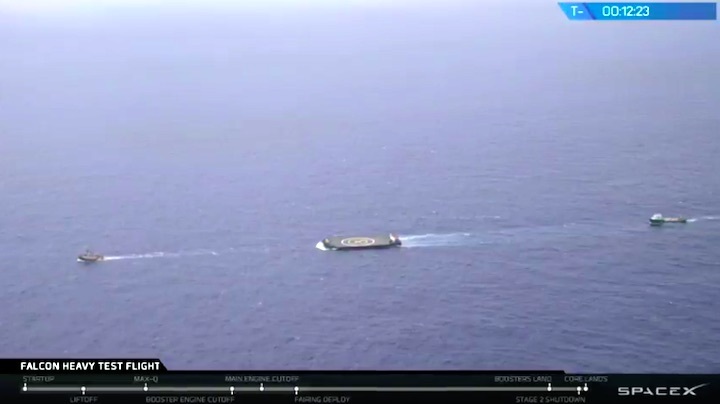
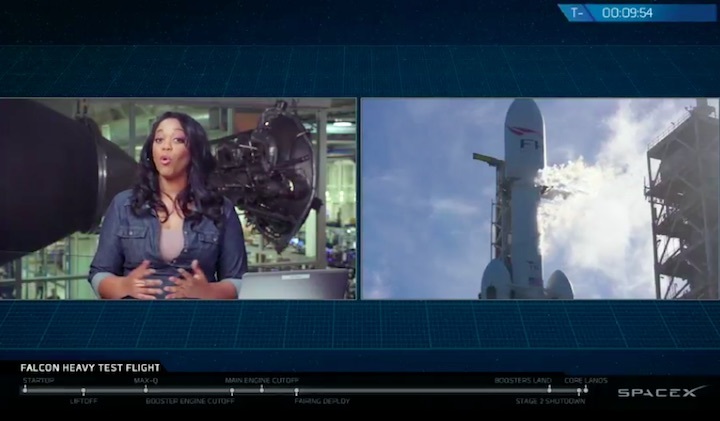
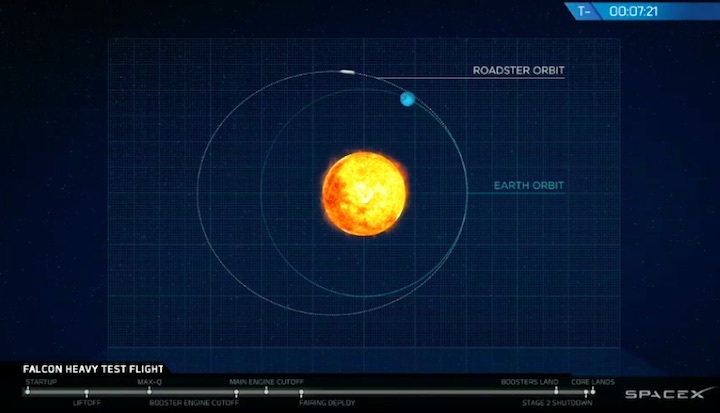
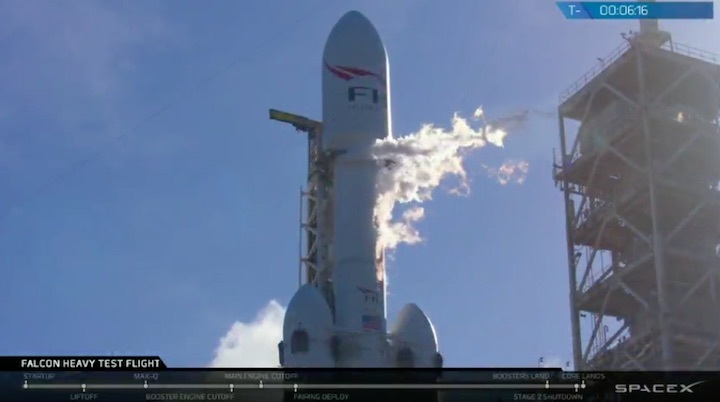
+++
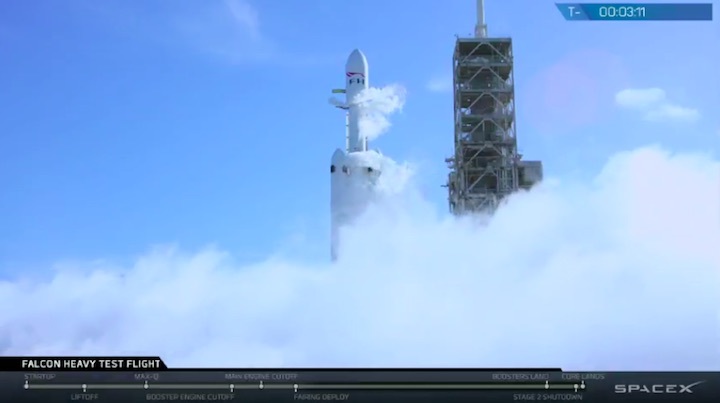
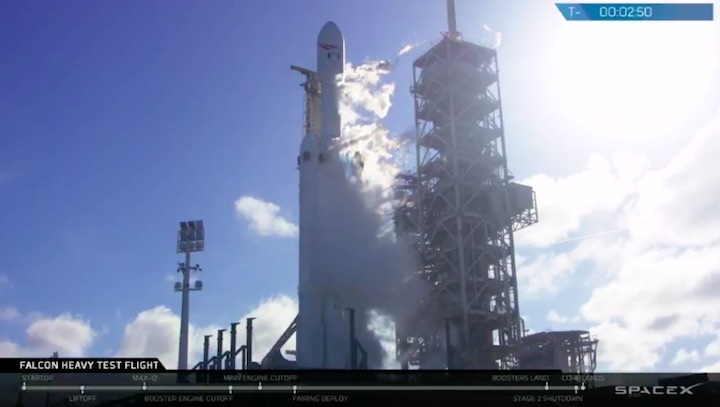
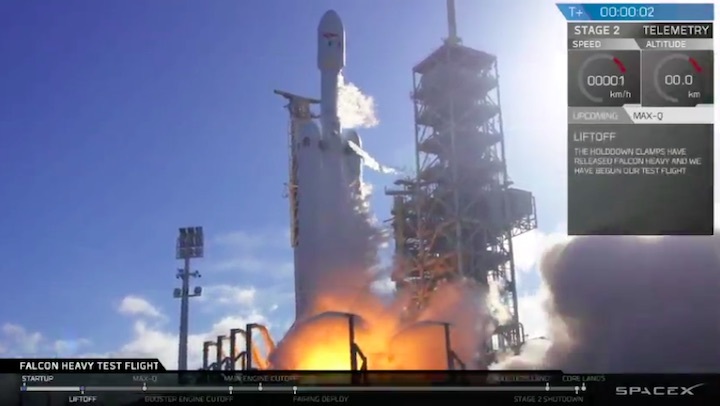
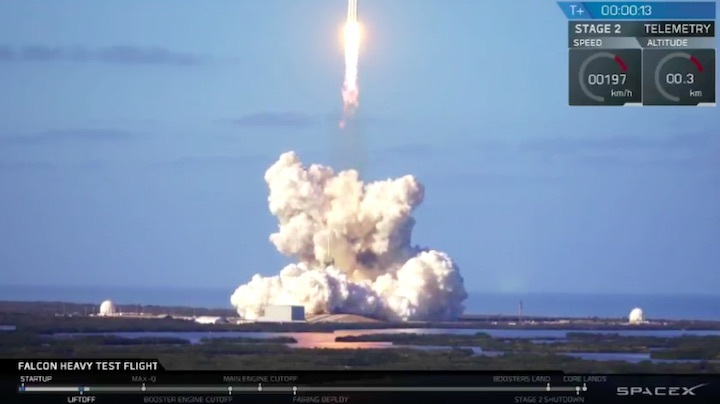
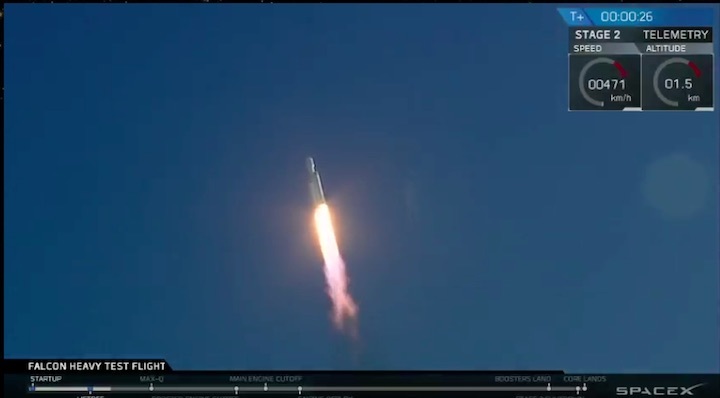
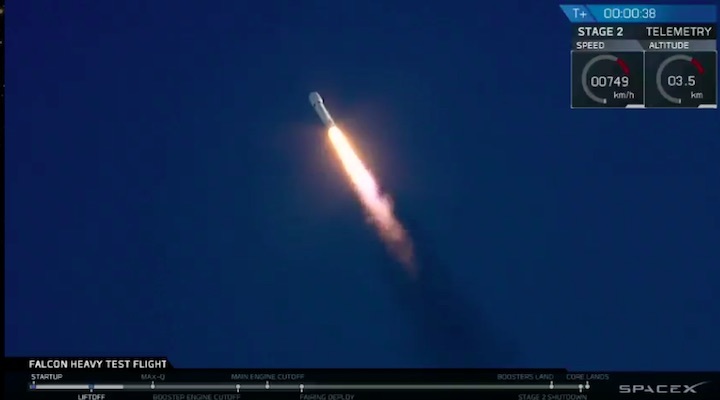
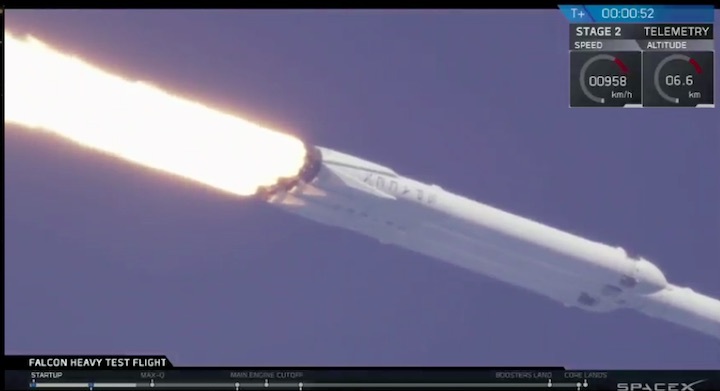
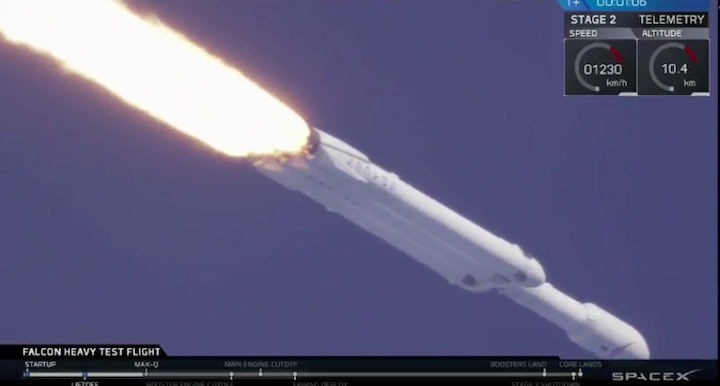
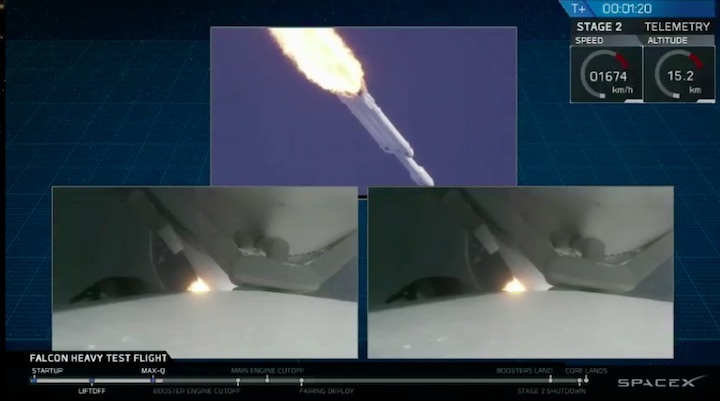
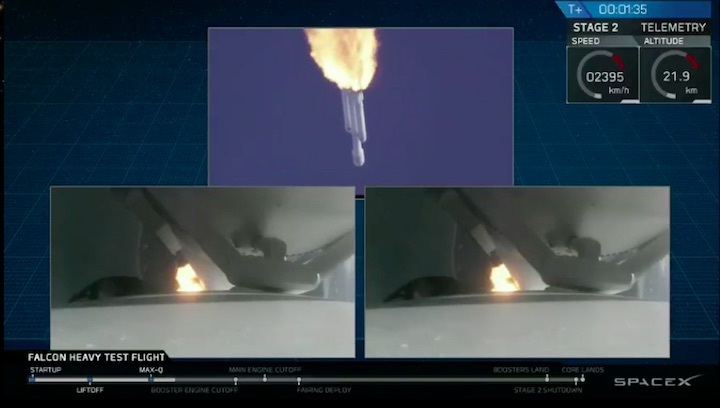

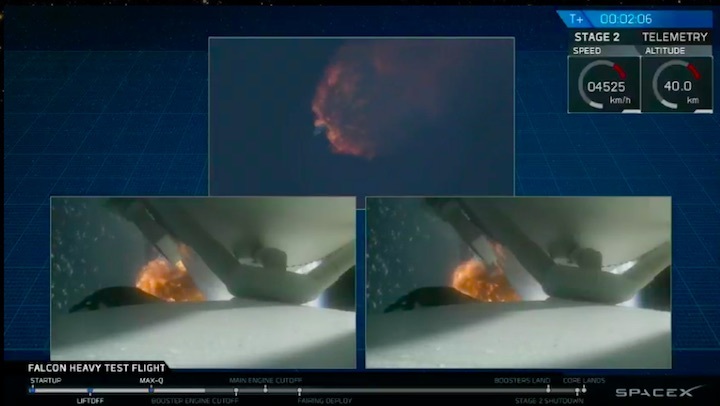
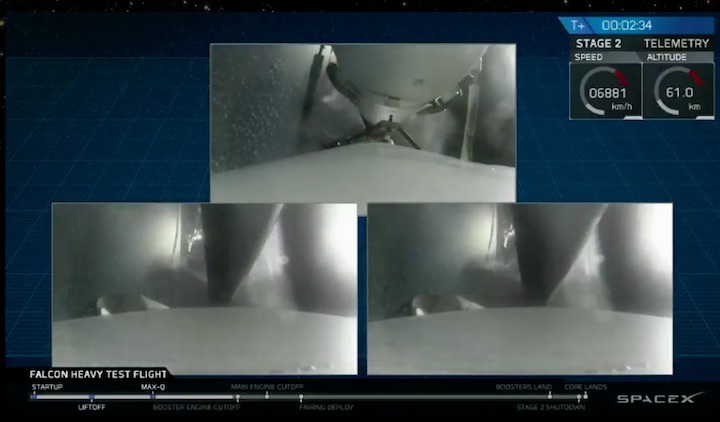
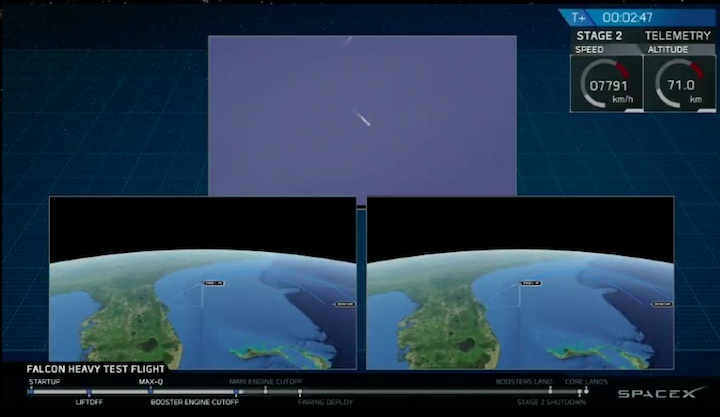
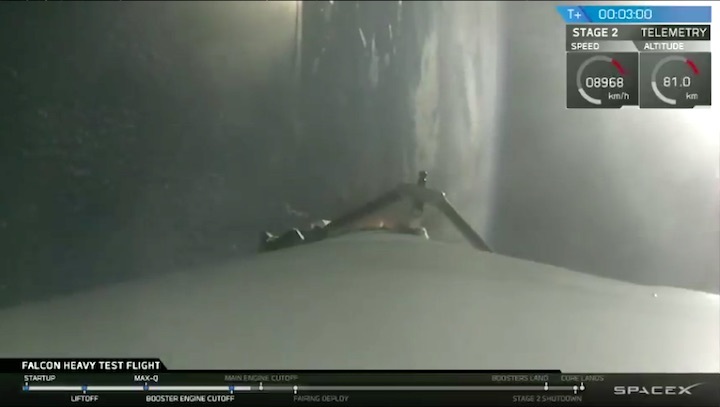
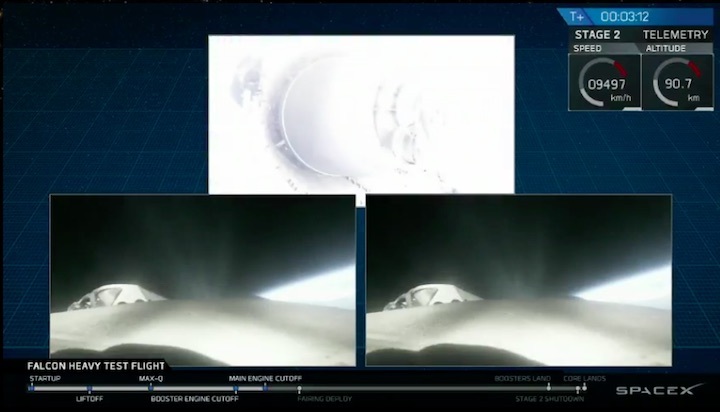
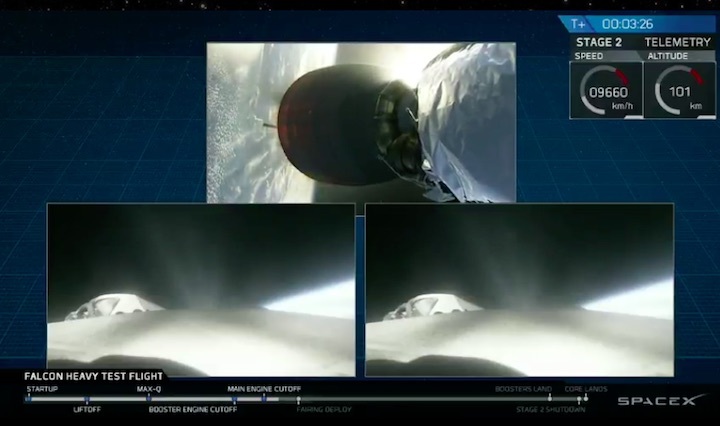
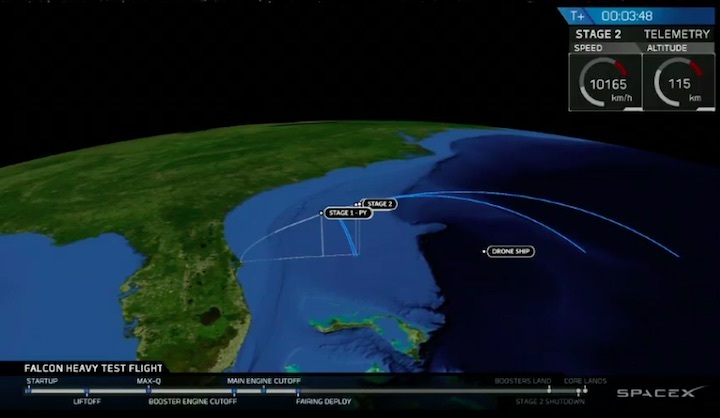
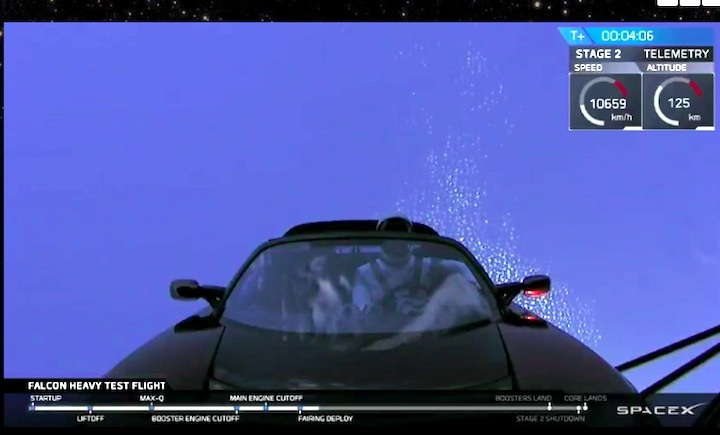

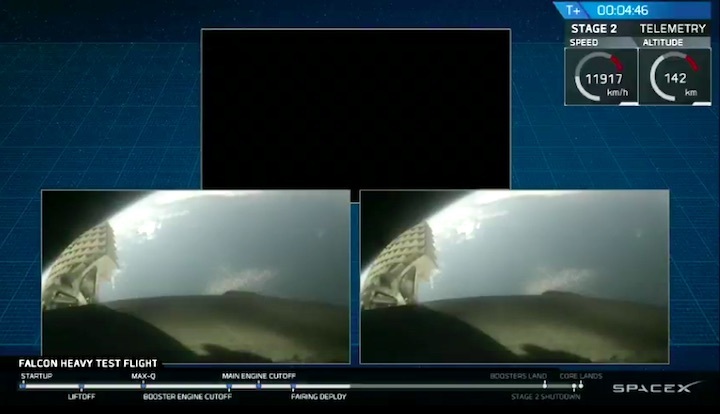
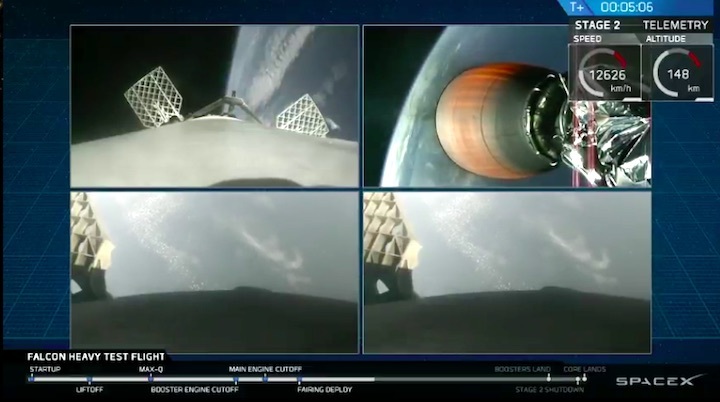
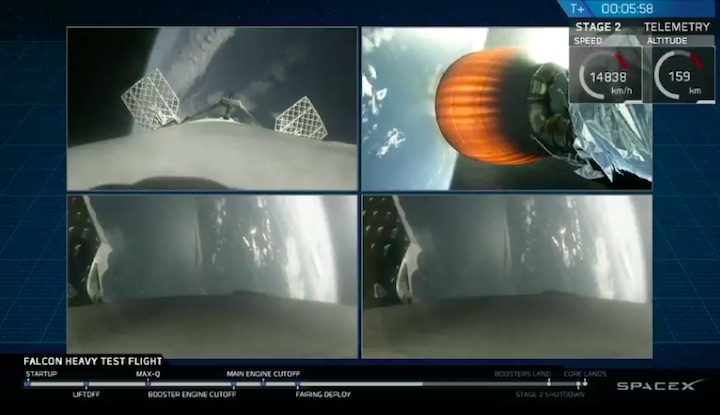
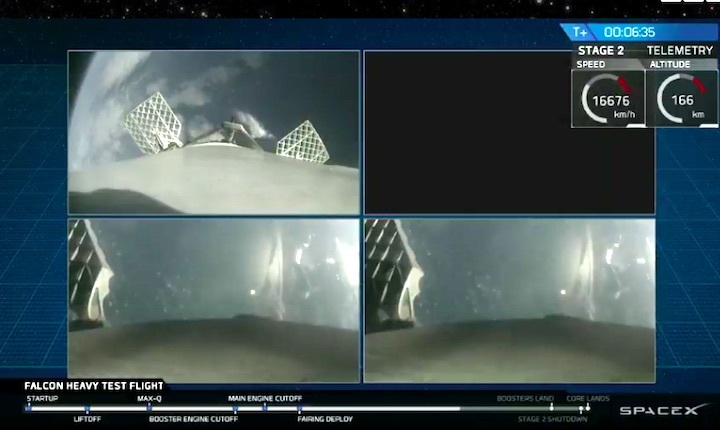
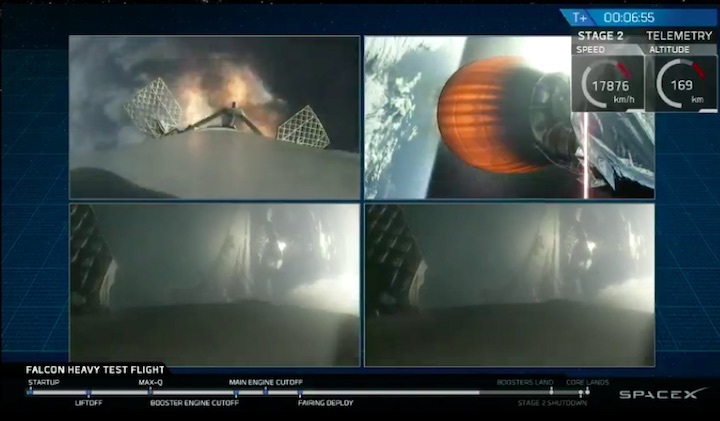
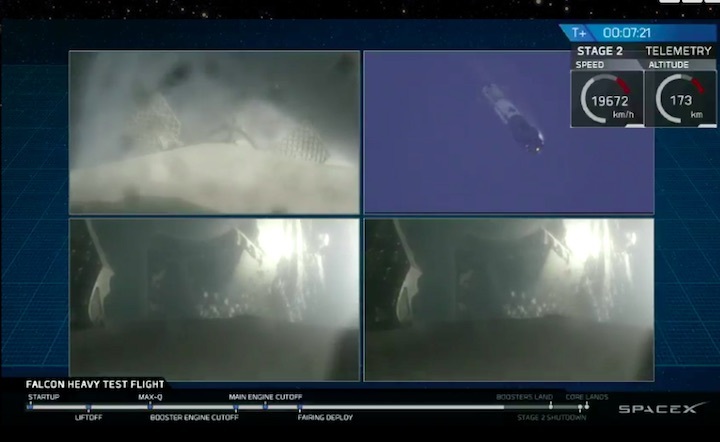
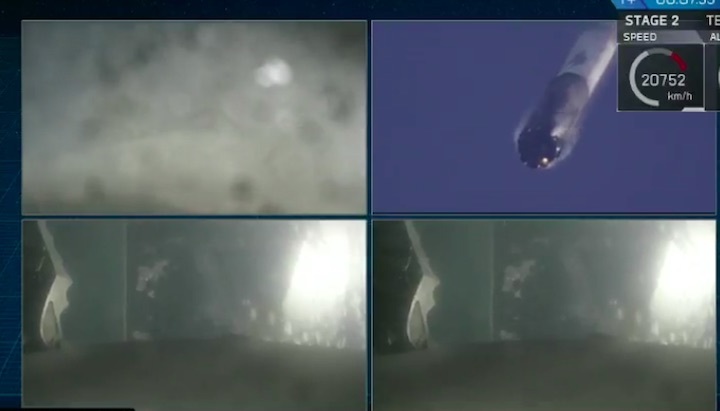
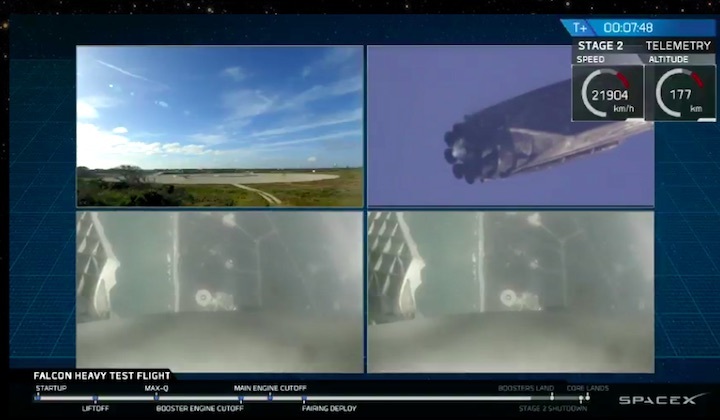
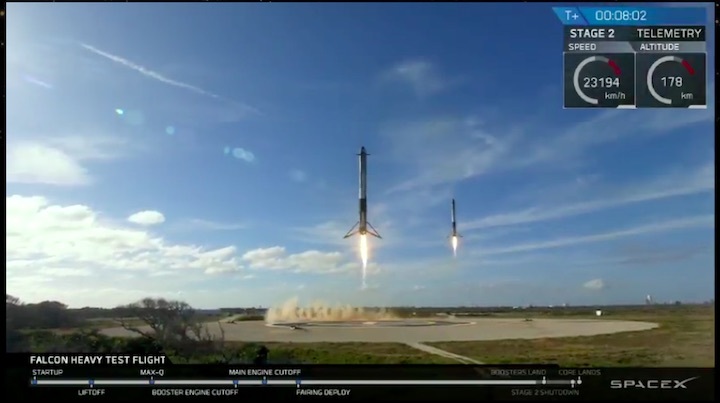
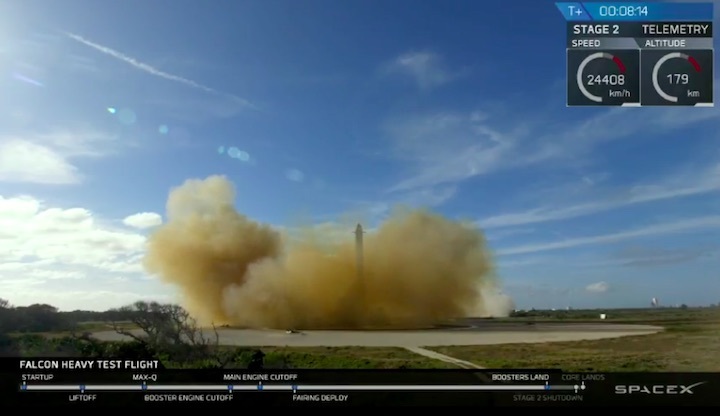
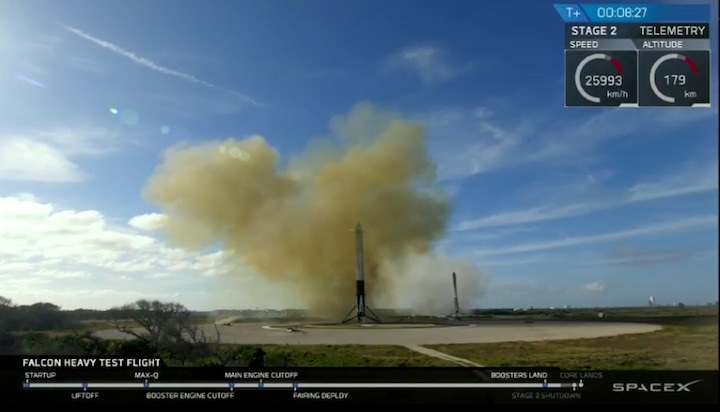
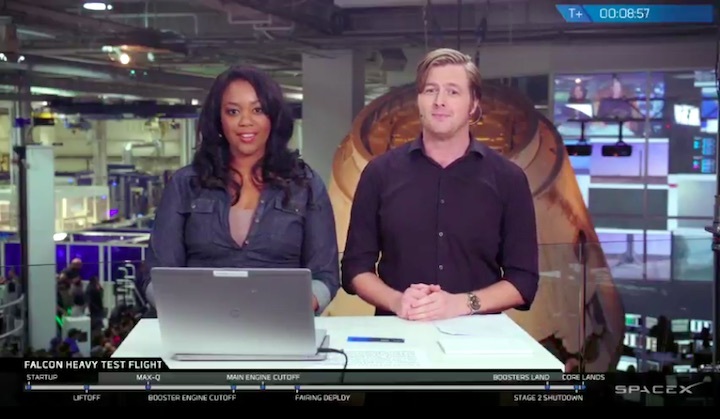
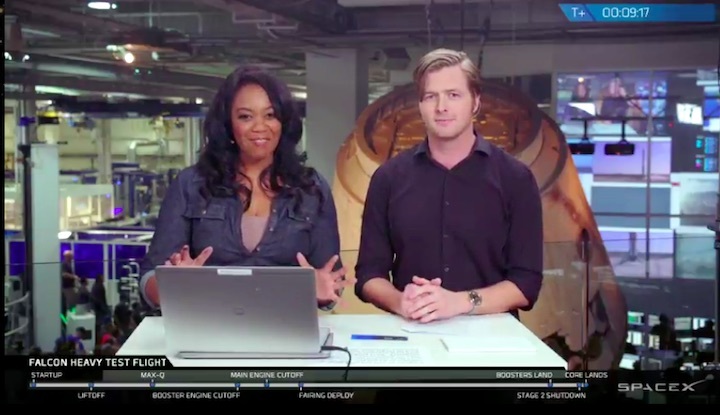
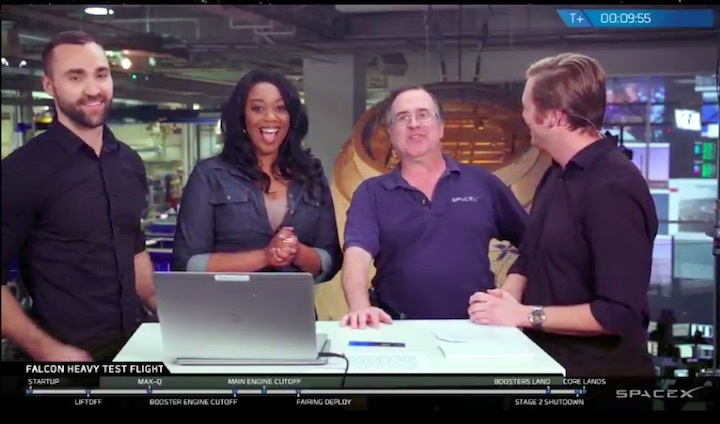
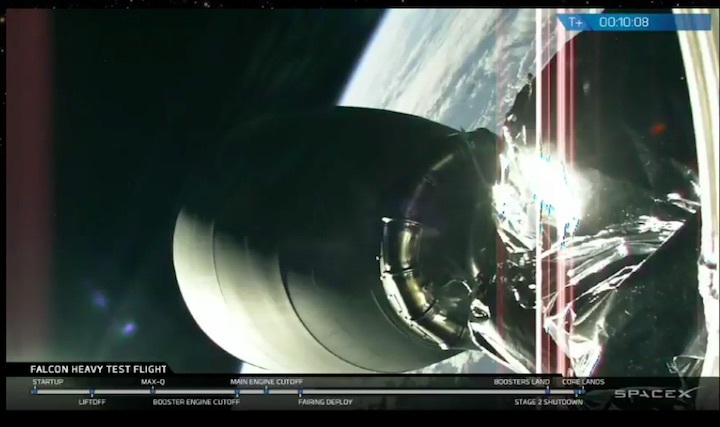


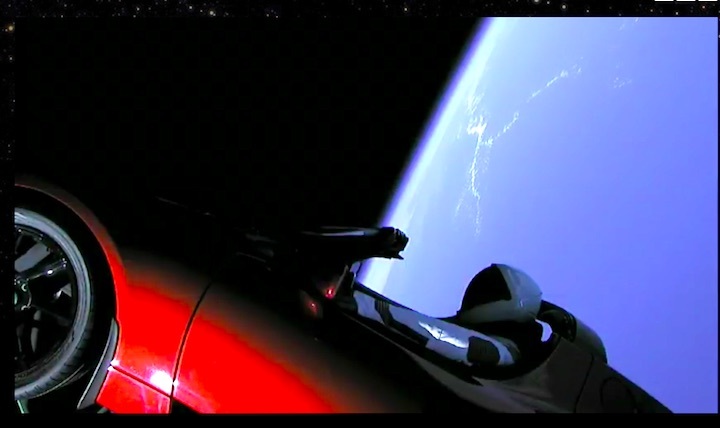

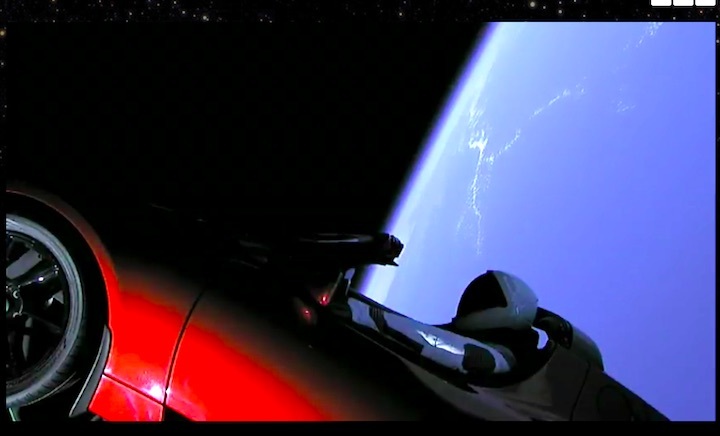
Quelle: SpaceX
